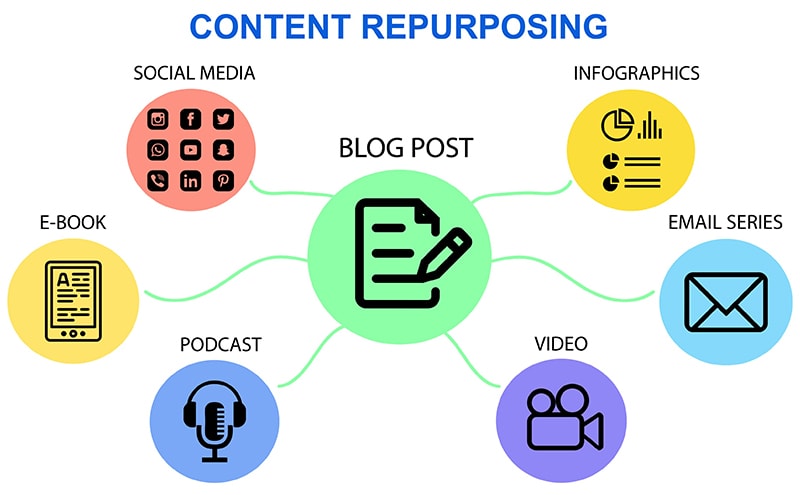Surveys are a must in the toolkit of every content marketer. This long-standing, widely adopted data collection method aids the marketer by drawing rich insights to be used in a variety of content formats.
This is when one might expect that response rates would be truthful, but a growing number of fraudulent responses are received. A type of fraudulent response that is becoming increasingly popular is what is known as “ghost completes.”
In this article, we will consider how ghost complete can compromise the effectiveness of the surveying process. We shall then delve deep into what actually contributes to ghost complete, and what effective strategies can be formulated and implemented in mitigating its occurrence for improving the quality of content.

What Is A Ghost Complete?
A ghost complete occurs when it appears that a survey respondent has completed the survey and qualifies for an incentive but no actual data is collected.
Ghost completes, due to the manipulation of the system involved with unencrypted redirect links, have negative impacts on the quality of data collected and compromise the reliability of the survey and gaps in the dataset.
This fraudulence activity clouds the integrity of the survey and makes marketers struggle to pool meaningful and measurable insights from the response. If the quality of data is not good, then the survey runs a risk of becoming obsolete, an uncalled-for expense for marketers.
But what does that mean for marketers? Ghost completions can have impacts throughout the entire ecosystem. Customers who expect valid responses are instead returned invalid completions. This in turn prevents content marketers from representing true meaning from their research and garnering real insights, which creates terrible campaign outcomes and results in time and effort wasted in planning, outlining, creating a content draft, publishing, and promoting a research study.
The Impact of Survey Fraud on Content Marketers
Content marketers rely very much on accurate and reflective responses from surveys, as a basis to retrieve useful feedback about their target audience.
They use this information to create meaningful, yet interesting, content in any form, including but not limited to infographics, blog posts, whitepapers, case studies, social media postings, and more. This, in turn, could drive increased website traffic, generate leads, boost conversions, secure product demos, and drive sales.
On the contrary, when the response to surveys is incomplete or fraudulent, such distorted data negatively impacts the ability of a content marketer to create content that is accurate. Such practices may result in many problems, which include but are not limited to:
- Not creating relevant and useful content.
- Missing the opportunity to meaningfully connect with and engage prospects.
- Waste of time and resources due to incomplete data.
- Loss of credibility and trust among intended audiences.
The Impact of Quality Issues on Efficiency: Results of Surveys
It goes without saying that fraud is growing and has entered all sectors of the economy, including that of market research. Yet, the latter industry is relatively in its infancy with regard to adopting technology and increasing security awareness.
With the advancement of technology and sophistication, associated frauds also increased in market research studies. Though fraud is a problem, it is not the only issue that affects the results of the surveys. Other quality issues concerning data that market researchers have to face are:
-
Length of A Survey
Long and complicated surveys are generally less likely to be completed. One study indicated that the completion rate for surveys containing 1 to 4 questions was 83.34% while the completion rate for surveys containing 16 or more questions was as low as 41.94%.
-
Poor Survey Design
If your questionnaire is ambiguous, vaguely open-ended, lacks logical transitions between others, or is not easy to go through, respondents will surely close it without completing it.
Since you want to engage your survey respondents, you should make sure you provide direct instructions, ensure a smooth transition, and add style to your questionnaire.
-
Survey Delivery
Like all types of marketing, your first try at capturing the attention of a would-be respondent may fall flat, and that goes for the art of the survey request.
By sending the survey more than once, you maximize your response potential. Consider sending a follow-up invitation as a reminder to participants to complete the survey before the end date.
-
Lack Of Personalization
Whenever the respondent of the survey does not relate to the content and context of the survey, then their probability of giving useful responses decreases.
Embedding personalization is a critical part of any marketing activity, and consumer surveys are no exception. Personalize your survey invites as a way to excite and capture the attention of your respondents.
-
Lack Of Incentive
Without an incentive, they may be less inclined to take online surveys. An incentive can request consumers, for instance, to participate in a survey by offering them a gift card at the end.
Research results indicate that an incentive generally tends to increase response rates by 15-20%, but the lift depends on the appeal and relevance of the incentive to your target audience.
Fraud Vs. Quality Issues
Data incompleteness and inaccurateness is an increasing problems in the field of market research, and this is beyond the quality issues described above. In that regard, it is relevant to differentiate between different types of fraud and quality problems of the data:
Fraudulent Activities:
- Ghost completions.
- Multiple responses.
- Pattern behavior.
- Similar IP addresses.
- Providing the same open text response repeatedly.
- Gibberish or different language in open-text responses.
Data Quality Concerns:
- Key smashing-random letters or numbers.
- Contradictory responses.
- Irrelevant responses—swearing, for example
- Thoughtless or poorly composed open-ended question responses
No matter how well you prepare, data quality, fraud, as well as poor question responses, are inevitable. However, market research organizations can minimize the fraudulent activities, at least in cases involving ghost completion.
Effective Ways To Reduce Ghost Completes
Ghost completions have now become such a prevalent problem across the industry that it threatens to cast a shadow over market research companies and their collaborators who conduct consumer surveys.
What that eventually implies is that it casts a pall on the data analysts and the content marketers since it provides biased results which can kill the purpose of your survey.
To avoid this expensive predicament or to help your clients, as a market research company, here are some recommendations that will help you defeat these fraudsters’ responses and ghost completions:
- Utilize Secure Links: Let the links that you use be secure so that fraudulent access is prevented.
- Encrypt Links: Encrypt the links so that data confidentiality may be maintained and no integrity of the data is lost during its transport. Added security also makes their manipulation a bit difficult.
- Partner with Technology Experts: A technology partner can easily allow buyers and suppliers to connect in a secure way. It utilizes additional security but also enables real-time validation of response data.
- Authenticate Real Responses: It allows server-to-server callbacks-whereby the server hosting a survey might call back a system tasked with recording and tallying survey responses—to confirm that an actual completion has occurred.
Also, consider the following best practices:
Open Communication: If you see anything out of the ordinary, then inform your survey platform partner immediately. They can investigate the problems further and develop strategies to eradicate them.
Embed Data Quality Questions: Insert questions about data quality in your survey, which will help reduce the possibility of the “bots” of surveys and people not authorized from creating a dent in your data.
Real-Time Data Reporting: Report low-quality data as near to real-time as possible, enabling faster corrective actions.
The specter of ghost completions can be overcome in your market research with the institution of such measures, complemented by adherence to best practices.
Putting It All Together
With great content holding sway and most likely to ascend to the top of the search engine results pages, it is then that online studies and other various forms of research content formats emerge as winners when they remain free from the haunting specter of ghost completions.
By using the practices listed above, the level of ghost completions by content marketers and researchers will decrease, while the quality of responses will increase and really valuable data will be achieved that truly informs effective decision-making.
The focus on quality here will make the content worthier, more useful, and more powerful, boosting sharing, search engine standing, and general campaign performance.










